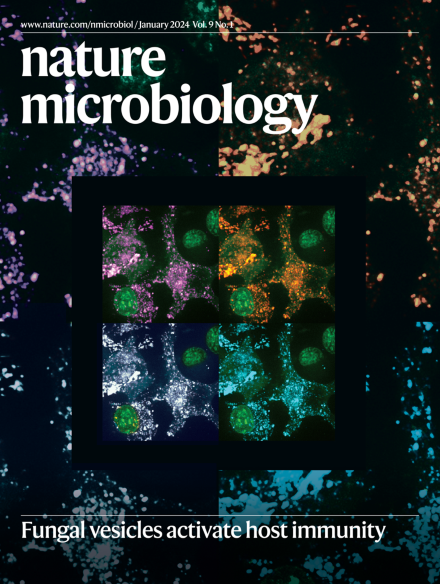通过化学水解和工程恶臭假单胞菌对聚酰胺进行升级再利用
IF 20.5
1区 生物学
Q1 MICROBIOLOGY
引用次数: 0
摘要
脂肪族聚酰胺或尼龙因其高耐久性和抗拉强度而广泛用于纺织和汽车工业,但回收率低于5%。聚酰胺的化学回收是可能的,但通常会产生单体和低聚物的混合物,这阻碍了下游的净化。本研究在实验室适应性进化的指导下,对恶臭假单胞菌KT2440进行了改造,以代谢6-氨基己酸、ε-己内酰胺和1,6-己二胺等c6 -聚酰胺单体。尼龙酶的异源表达也使p.p . putida代谢由化学聚酰胺水解产生的线状和环状尼龙低聚物。RNA测序和逆向工程揭示了这些非天然底物的代谢途径。为了证明微生物升级循环,研究人员异种表达了Cupriavidus necator的phaCAB操纵子,使PA6水解产物能够生产聚羟基丁酸盐(PHB)。本研究提出了一种微生物宿主,结合化学水解,将聚酰胺单体和混合聚酰胺水解物转化为增值产品。本文章由计算机程序翻译,如有差异,请以英文原文为准。


Upcycling of polyamides through chemical hydrolysis and engineered Pseudomonas putida
Aliphatic polyamides, or nylons, are widely used in the textile and automotive industry due to their high durability and tensile strength, but recycling rates are below 5%. Chemical recycling of polyamides is possible but typically yields mixtures of monomers and oligomers which hinders downstream purification. Here, Pseudomonas putida KT2440 was engineered to metabolize C6-polyamide monomers such as 6-aminohexanoic acid, ε-caprolactam and 1,6-hexamethylenediamine, guided by adaptive laboratory evolution. Heterologous expression of nylonases also enabled P. putida to metabolize linear and cyclic nylon oligomers derived from chemical polyamide hydrolysis. RNA sequencing and reverse engineering revealed the metabolic pathways for these non-natural substrates. To demonstrate microbial upcycling, the phaCAB operon from Cupriavidus necator was heterologously expressed to enable production of polyhydroxybutyrate (PHB) from PA6 hydrolysates. This study presents a microbial host for the biological conversion, in combination with chemical hydrolysis, of polyamide monomers and mixed polyamids hydrolysates to a value-added product. Metabolic engineering guided by laboratory evolution enables upcycling of nylon by Pseudomonas putida.
求助全文
通过发布文献求助,成功后即可免费获取论文全文。
去求助
来源期刊

Nature Microbiology
Immunology and Microbiology-Microbiology
CiteScore
44.40
自引率
1.10%
发文量
226
期刊介绍:
Nature Microbiology aims to cover a comprehensive range of topics related to microorganisms. This includes:
Evolution: The journal is interested in exploring the evolutionary aspects of microorganisms. This may include research on their genetic diversity, adaptation, and speciation over time.
Physiology and cell biology: Nature Microbiology seeks to understand the functions and characteristics of microorganisms at the cellular and physiological levels. This may involve studying their metabolism, growth patterns, and cellular processes.
Interactions: The journal focuses on the interactions microorganisms have with each other, as well as their interactions with hosts or the environment. This encompasses investigations into microbial communities, symbiotic relationships, and microbial responses to different environments.
Societal significance: Nature Microbiology recognizes the societal impact of microorganisms and welcomes studies that explore their practical applications. This may include research on microbial diseases, biotechnology, or environmental remediation.
In summary, Nature Microbiology is interested in research related to the evolution, physiology and cell biology of microorganisms, their interactions, and their societal relevance.
 求助内容:
求助内容: 应助结果提醒方式:
应助结果提醒方式:


